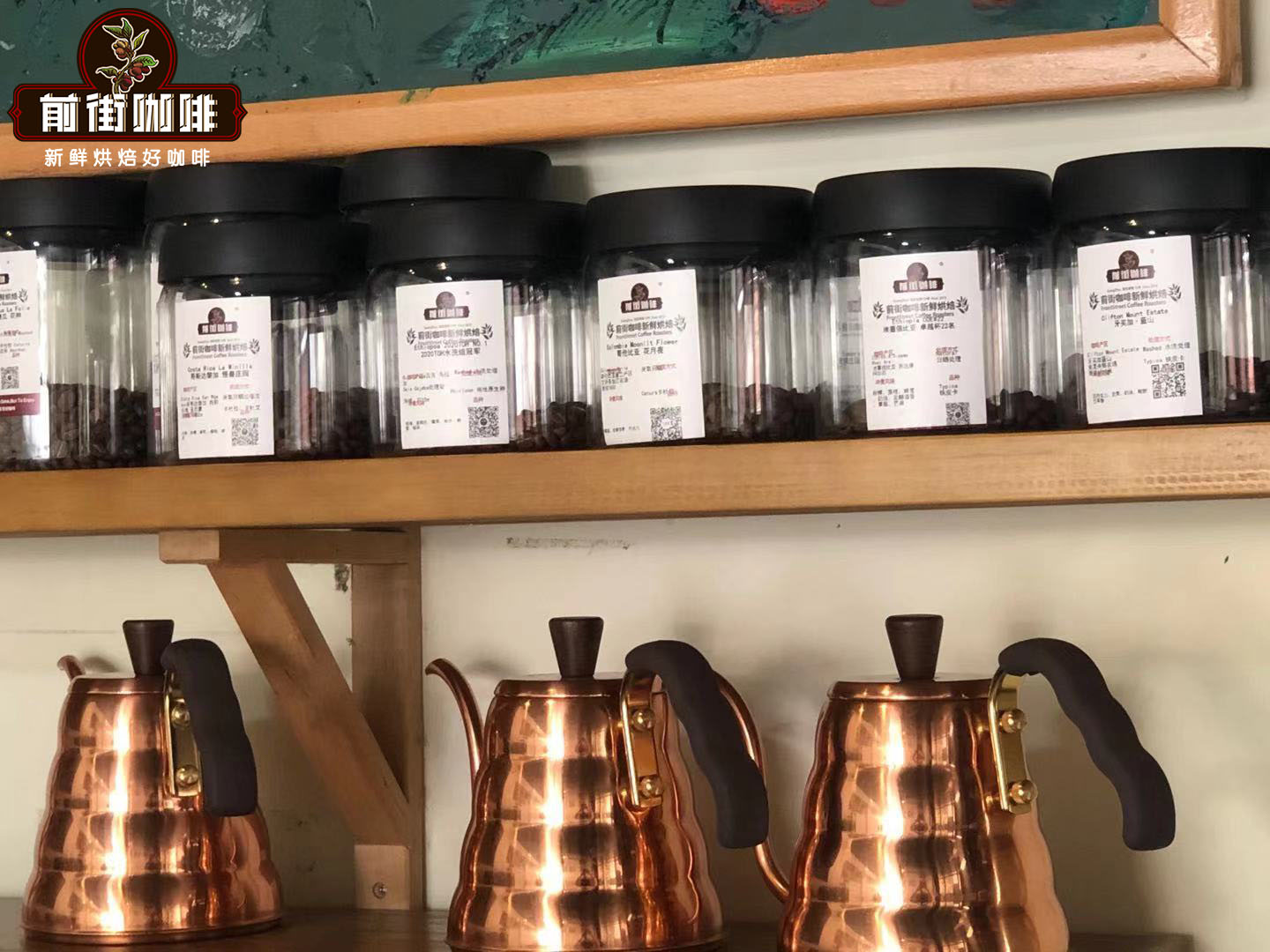What is the difference between yellow honey, red honey and black honey in the flavor of Costa Rican honey treated coffee?

Costa Rican coffee honey treatment
Honey treatment, called HoneyProcess or Miel Process, is used in coffee gardens in Costa Rica (Costa Rica), Panama (Panama) and Guatemala (Guatemala), which is called Honey Coffee. The so-called honey treatment refers to the process of making raw beans with mucous membrane for sun-drying. After the outer pulp of the coffee bean is removed, there will be a layer of sticky jelly. The traditional washing method washes it away with clean water, but this direct drying method has been born because of the limitations of water resources in some high-altitude areas.
Juxtaposed with the two traditional treatment methods, water washing and sun treatment, honey treatment has become a unique method in coffee treatment. The taste difference between honey treatment and water washing treatment: higher sweetness, higher sugar content and higher alcohol thickness (under the premise of the same baking degree)
Honey treatment keeps the coffee clean after washing, and although the brightness of the coffee decreases, it increases the sweetness and caramel taste. According to the different degree of honey treatment, honey-treated coffee can be divided into yellow honey treatment, red honey treatment and black honey treatment.
According to NordicApproch, Seattle Coffee and Origin Coffee, the raw bean companies run by the big shot Tim, it can be summed up:
Yellow honey: about 40% of the pectin is removed; the drying method requires the most direct heat absorption, receives the most light drying, and lasts for about 8 days to reach a stable water content.
Red honey: about 25% of the pectin is removed; it takes longer to dry than yellow honey, and reduces direct exposure to sunlight, even in shading sheds, lasting about 12 days.
Black honey: retain close to 80% pectin; dry for the longest time, lasting at least 2 weeks, with a cover to avoid too strong sunlight, prevent drying too fast, and make sugar conversion more fully.
The advantage of honey treatment is that it can best preserve the original sweet flavor of ripe coffee, giving the coffee a light black sugar flavor and drupe flavor, while the berry flavor also supports the basic aroma of red wine, which is considered to be a very elegant product.
The biggest difference between honey treatment and Brazilian semi-washing is that the former does not drip water, because be sure to choose flawless red fruit, pectin is sweet. The honey-treated pectin planer is more demanding, and the thickness of the pectin planing must be precisely controlled, just like the bean grinder.
Basically, the manufacturing process of [red honey] is much more difficult than that of [yellow honey], but the taste spectrum is deeper, with a hint of game on the palate, but instantly feathered into a rich fruit sweet aroma, just like the delicate fermented aroma of Yega Xuefei's well-known sun beans Biloya and Aricha.
The main difference between [white honey] treatment and [yellow honey] treatment is "the distinction of drying thickness", which determines the drying speed and drying uniformity, and then affects the sweetness and fermentation degree of coffee.
On the topic of "Central and South American honey-treated coffee lacks clear flavor and blindly pursues fermentation characteristics", during the cup test, it was found that white honey and yellow honey coffee did not have the fermentation and soy sauce flavor of traditional honey treatment at all. On the contrary, sweet and sour coffee is more like a cup of excellent washed coffee (by the way, I am a water wash control). This kind of honey treatment brings a sour, refreshing and clean constitution similar to that of red berries.
The coffee beans produced at the high latitudes of Costa Rica are famous in the world, full-bodied, mild in taste, but extremely sour. The coffee beans here have been carefully processed, which is why they have high quality coffee. Located in the south of SanJos é, the capital of Tarasu, Costa Rica is one of the most valued coffee growers in the country.
The cultivation of coffee has a long history, but in the past 10 years, the more cutting-edge "dry" treatment has become a trend, collectively known as the "honey treatment". Honey treatment is a method between sun-drying and water washing. It keeps the coffee clean by washing and greatly increases the sweetness and caramel flavor of the coffee by drying in the sun together with the mucous membrane of the fruit pulp.
What flavor is the failed honey-treated coffee?
But the failed honey-treated coffee will have a strong defective sun flavor, similar to the rough sun-cured onion, durian, bean curd and, more seriously, alcohol potions. Normal honey-treated coffee has a mild sour taste. If it is sour enough to pout, it will also be a good product.
The first thing about honey treatment is freshness. If the manufacturing period is more than 10 months, the charming sweet aroma of fruit will be lost.
Why does the sun treatment retain 100% flesh but not that sweet?
After all, the sun still retains the peel, the fermentation process of some microbes is not so deep, and the sugar may remain in the dried pulp. Of course, each treatment has its own characteristics, and the climate of each year will also affect the flavor of coffee. Indeed, if you want to have a deeper understanding of the flavor differences between different treatments, drinking directly is a very intuitive way.
What is the difference in flavor between yellow honey, red honey and black honey in Costa Rican honey treatment?
Simple understanding: the more pectin you keep, the richer and sweeter the coffee will be. Here is a comparison of the flavors of several honey treatments in our cafe:
Fenghuang Manor red honey flavor: dried fruit, vanilla, honey, thick and delicate taste, good sweetness, soft acidity, round and full, long-lasting finish, strong sucrose sweetness of plum, raspberry, chestnut and tail rhyme, and the fragrance of apple peel.
Yerzaro processing plant yellow honey flavor: famous for its excellent natural geographical conditions and excellent regional planting management technology, almost perfect classic flavor, lively citrus flavor in acidity. BlackBerry fruit aroma, acidity and texture, melons sweet taste smooth, drupe / micro-flower aroma, while the finish has a significant coffee flower aroma, is a full of Latin country taste coffee.
Rami Manor Black Honey treatment: with the mild acidity, soft taste and sweet high-quality berry flavor treated with honey, the most obvious difference between them is that they are sweeter than the other from yellow, red and black, plus richer fruit rhymes. The biggest feature is a very amazing sweetness, plum, honey, brown sugar tail rhyme.
A brief summary:
Sweetness: black honey > red honey > yellow honey > white honey
Cleanliness: White honey > yellow honey > red honey > black honey
Sense of balance: red honey / yellow honey > black honey / white honey
[honey treatment and cooking:]
Our so-called technique is not to adjust the flavor, because the flavor is determined by the coffee bean producing area, treatment method and baking method. The technique is to adjust the speed and proportion of water passing through the coffee powder, so as to adjust the amount of flavor release. Then the taste must depend on the following points:
1. The speed at which water passes through coffee powder (selection of utensils)
two。 The temperature of water
3. What is the thickness and state of the powder?
4. Depth of baking degree
5. The length of steaming time
Usually manual extraction, one serving, 15 grams of powder, thickness and water temperature slightly adjusted due to different baking
1. Yellow honey (medium baking): small Fuji ghost tooth grinding 3.5, water temperature 90-91 degrees, gouache 1:14
2. Red honey (medium baking): small Fuji ghost tooth grinding 4, water temperature 89-90 degrees, gouache 1:15
3. Black honey (medium and shallow baking): small Fuji ghost tooth grinding 3.5, water temperature 90-91 degrees, gouache 1:14
Important Notice :
前街咖啡 FrontStreet Coffee has moved to new addredd:
FrontStreet Coffee Address: 315,Donghua East Road,GuangZhou
Tel:020 38364473
- Prev

Why is gold manning sour? Manning is suitable for whom to drink and how to drink it.
Professional barista communication please pay attention to the coffee workshop (Wechat official account cafe_style) gold Manning why also sour? Mantenin suitable for who to drink, how to drink manning: rich and solid taste, herbal medicine, with a pleasant sour taste, strong taste, solid and mellow taste. Mellow smell, moderate acidity, rich sweetness, very intriguing, suitable for deep baking
- Next

Introduction to the flavor characteristics and flavor description of Costa Rican hand-made coffee beans
For the exchange of professional baristas, please follow the coffee workshop (Wechat official account cafe_style) today to share with you a demonstration of the comparative brewing of Costa Rican coffee hand siphon. The protagonist is Moza, the musician series of raisins from Carnett Manor in the Tara Pearl region of Costa Rica.
Related
- Detailed explanation of Jadeite planting Land in Panamanian Jadeite Manor introduction to the grading system of Jadeite competitive bidding, Red bid, Green bid and Rose Summer
- Story of Coffee planting in Brenka region of Costa Rica Stonehenge Manor anaerobic heavy honey treatment of flavor mouth
- What's on the barrel of Blue Mountain Coffee beans?
- Can American coffee also pull flowers? How to use hot American style to pull out a good-looking pattern?
- Can you make a cold extract with coffee beans? What is the right proportion for cold-extracted coffee formula?
- Indonesian PWN Gold Mandrine Coffee Origin Features Flavor How to Chong? Mandolin coffee is American.
- A brief introduction to the flavor characteristics of Brazilian yellow bourbon coffee beans
- What is the effect of different water quality on the flavor of cold-extracted coffee? What kind of water is best for brewing coffee?
- Why do you think of Rose Summer whenever you mention Panamanian coffee?
- Introduction to the characteristics of authentic blue mountain coffee bean producing areas? What is the CIB Coffee Authority in Jamaica?

